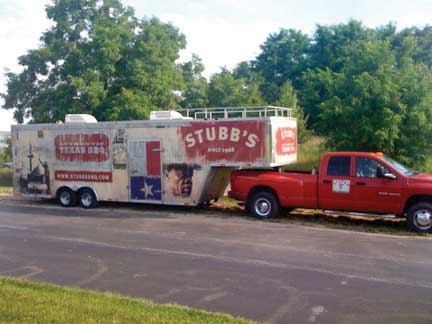This is “The Promotion Budget”, section 11.5 from the book Marketing Principles (v. 1.0). For details on it (including licensing), click here.
For more information on the source of this book, or why it is available for free, please see the project's home page. You can browse or download additional books there. To download a .zip file containing this book to use offline, simply click here.
11.5 The Promotion Budget
Learning Objectives
- Understand different ways in which promotion budgets can be set.
- Understand how the budget can be allocated among different media.
An offering’s budget is a critical factor when it comes to deciding which message strategies to pursue. Several methods can be used to determine the promotion budget. The simplest method for determining the promotion budget is often merely using a percentage of last year’s salesA budgeting technique based on a set percentage of current or projected sales. or the projected sales for the next year. This method does not take into account any changes in the market or unexpected circumstances. However, many firms use this method because it is simple and straightforward.
The affordable methodA budgeting technique whereby companies spend what they think they can afford promoting a product., or what you think you can afford, is a method used often by small businesses. Unfortunately, things often cost more than anticipated, and you may not have enough money. Many small businesses think they’re going to have money for promotion, but they run out and cannot spend as much on promotion as they had hoped. Such a situation may have happened to you when you planned a weekend trip based on what you thought you could afford, and you did not have enough money. As a result, you had to modify your plans and not do everything you planned.
Other companies may decide to use competitive parityA budgeting method whereby companies make sure their promotion budgets are comparable to their competitors’.—that is, they try to keep their promotional spending comparable to the competitors’ spending level. This method is designed to keep a brand in the minds of consumers. During a recession, some firms feel like they must spend as much—if not more—than their competitors to get customers to buy from them. Other companies are forced to cut back on their spending or pursue more targeted promotions. When Kmart faced bankruptcy, they cut back on expenditures, yet they kept their advertising inserts (free-standing inserts, or FSI) in Sunday newspapers to remain competitive with other businesses that had an FSI.
A more rational approach is the objective and task methodA budget based on a company’s promotion objectives and the costs of the activities and tasks necessary to accomplish those objectives., whereby marketing managers first determine what they want to accomplish (objectives) with their communication. Then they determine what activities—commercials, sales promotions, and so on—are necessary to accomplish the objectives. Finally, they conduct research to figure out how much the activities, or tasks, cost in order to develop a budget.
Part of the budgeting process includes deciding how much money to allocate to different media. Although most media budgets are still spent predominantly on traditional media, shifts in spending are occurring as the media landscape continues to change. Mobile marketing continues to become more popular as a way to reach specific audiences. One estimate shows that over one-third of cell phone users were exposed to mobile advertising in 2009 and that 16 percent of the people exposed to mobile advertising responded to the ads via text messaging. Younger people are typically the most accepting of mobile advertising.Jack Loechner. “Advertising Growth Spreads in All Mobile Formats,” Research Brief, MediaPost Blogs, May 27, 2009, http://www.mediapost.com/publications/article/106675/ (accessed April 13, 2012).
Figure 11.11 Stubb’s Bar-B-Q Trailer—Out-of-Home Advertising That Is Mobile Marketing

The Stubb’s Bar-B-Q trailer travels around the country promoting the brand name and product.
Source: Photo courtesy of Stubb’s Legendary Kitchen.
The manufacturers of most major brands plan to use texting and multimedia messages in the future. Mobile marketing allows advertisers to communicate with consumers and businesses on the go. Over half of Chinese, Korean, Indian, and Thai Internet users access social media sites through their phones rather than through computers.“Social Network Site Users Ready to Go Mobile But Telecom Carriers Need to Set the Stage for Mass Adoption, Says IDC,” IDC, November 17, 2009, http://www.idc.com/AP/pressrelease.jsp?containerId=prSG22084309 (accessed January 20, 2010). While many marketers plan to use electronic devices for their mobile-marketing strategies, other firms may use movable or mobile promotions (see Figure 11.11 "Stubb’s Bar-B-Q Trailer—Out-of-Home Advertising That Is Mobile Marketing"), which, as discussed earlier, are also considered out-of-home advertising. It is anticipated that the percentage companies spend on mobile media may be as much as 25 percent of their total promotional budgets by 2011.“89% of Major Brands Planning to Market via Mobile Phones by 2008,” Mobile Europe, February 20, 2006, http://www.mmaglobal.com/research/89-major-brands-planning-market-mobile-phones-2008-mobile-marketing- accelerate-more-half-br (accessed April 13, 2012).
Key Takeaway
Companies can determine how much to spend on promotion several different ways. The percent of sales method, in which companies use a set percentage of sales for their promotion, is often the easiest method to use. Small companies may focus on what they think they can afford while other organizations may try to keep their promotions relatively equal to their competitors’. The objective and task approach takes objectives into consideration and the costs of the tasks necessary to accomplish objectives in order to determine the promotion budget.
Review Questions
- Explain four different ways to set a product’s promotion budget.
- What is mobile marketing?




